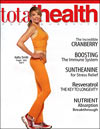Reiki at work
It was 2 a.m., and Sinikka Laitamaki was still trying to finish work for the day. She sent off one last e-mail and went straight to bed. Four hours later, she woke up and went right back to work, and at 2 a.m. the next morning, there she was again, still e-mailing. The large New Jersey-based pharmaceutical company she worked for was in the midst of a massive simultaneous merger and acquisition affecting more than 130,000 employees worldwide -- no one could say exactly how many because the company was changing so fast. And deadlines had to be met: a delay for even one product transfer could have cost the company $1 million a day. As the organizational ground beneath them continued shifting, she and her co-workers found themselves not only implementing the changes but threatened by them. “People ended up having to apply for their own jobs all over again,” she recalls. Finally after months of dealing with such extreme stress, Sinikka discovered her own job was being merged out. Rather than scrambling for another position, “I chose to look at new career paths,” she says.
“And that led me to Reiki. I had always wanted to do consulting and teaching,” she says. “I decided I was going to be completely open, without knowing where it would lead me, and then I found an ad for a Reiki 1 class. I just knew I had to go do it.”
She continued her studies and is now a Reiki master in two lineages. As her Reiki training and practice gave her new tools to deal with stress, Sinikka never forgot her former colleagues back in the corporate world. She was determined to bring what she’d learned back into that stressful environment to help them not only cope, but excel.
For most of her corporate career, Sinikka focused not on scrambling to keep up with change but developing high-performance teams and innovative ways of empowering workers. And before that, back in her native Finland, she earned a master’s in education specializing in the Suggestopedic method of learning, which uses music, relaxation and other methods. She combined those approaches with Reiki, meditation, office yoga and qigong into a way of helping workers shift their energy levels to a more positive place even if they don’t have time to take a break. She calls it High Performance from Within, and The Reiki Digest was on hand a couple of weeks ago when she demonstrated a key component at the New Jersey Organizational Development conference. Yours truly was supposed to be the demonstration model, relaxing while Sinikka guided me through her four-step process, but it didn’t work that way. When the meditation began, everyone in the room followed along, so they got a much better demonstration by experiencing the energy shift themselves. I could see the difference in their faces when they opened their eyes.
After the session ended, participants hurried to give Sinikka their business cards. “We need this YESTERDAY,” one of them told her. Now she finds herself dealing with a different kind of work stress, not as an employee but as an entrepreneur. “I am using all the tools I have,” she says. “I couldn't teach this effectively if I didn't practice it myself.”
She has also taught her four-step process to MBA students at New York University and Rutgers University, and will make presentations in Finland and Russia this summer.
As if that weren’t enough, she hopes to make Reiki available in the workplace and even teach workers Reiki “so that they can do it right there at their desks when they need to. So the whole idea is that the employee has all the tools within anytime, and doesn’t have to go anywhere, or change clothes to do yoga or qigong. They can do it right there. It’s also crucial to build this in to the workday and work culture, so that it becomes part of your normal day -- a tool they can use anytime, like Reiki is now a part of my life.”
In the corporate world, of course, it all comes down to the bottom line. With Reiki in the workplace, Sinikka says, employees can not only be more productive, but healthier overall, and that could impact soaring health-care costs. It's one thing to believe it, another to prove it, so Sinikka is now looking for companies to participate in a pilot program to measure the impact of Reiki and the other components of the High Performance from Within system on workers. For more information, visit her web site.
For most practitioners, however, Reiki is not a full-time job. For most, it's a personal rather than professional practice, and for those who do work with clients, Reiki is a part-time business on the side. Nicholas Sweeney of Phoenix Wisdom Healing in New York also has a day job at a law firm, and he found a way to bring Reiki into his workplace.
"As a Reiki Master, I'm devoted to finding more ways to integrate Reiki into my daily life," Nicholas says. "I spend much of my time at work. What better place to use Reiki than at work where there are so many challenges to staying balanced, connected, and stress free?
"With that in mind, as a part of a new wellness initiative at my place of business, I offered to do a 'Reiki Lunch N' Learn.' It is so important to me that my colleagues know what has helped to keep me sane and balanced at work," Nicholas says. "Many people are unaware of just how easily Reiki can be incorporated into the workday to help support their personal and work-oriented intentions and goals. I spoke to my human resources director about Reiki and wellness at work, and she immediately jumped on board with the idea to do a Reiki Lunch n' Learn. I created an outline that is simply a modified version of a healing circle that includes: a short Reiki history, talking about what Reiki is and how it works, my personal Reiki story, a brief meditation, a brief chair-session demonstration, a modified healing circle where everyone gets to experience the Reiki energy, and a discussion about how Reiki can be used at work.
"I have grown quite fond of taking a 15 to 30 minute 'Reiki break' during the day," Nicholas says. "I go into an unoccupied office and let Reiki smooth away any stress and re-set me, so to speak. This is one way of using Reiki at work. Another way is to place your Reiki hands on yourself while sitting at your desk. Feeling a little frustrated about a boss or co-worker? Falling asleep at your computer? Unable to focus on the task at hand? For a few minutes, place one hand over your solar plexus and one over your heart and allow the Reiki energy to flow. It has been my experience when I do this that my energy and attitude shifts, and I am more capable of doing what needs to be done, whether that means taking a break, going for a walk, communicating with that co-worker or boss, or grabbing my headphones and selecting the perfect music to help me get excited about finishing up that project that needs to be completed. Those are only a few of the ways to use Reiki at work. The possibilities are unlimited!"
As reported here a couple of weeks ago, a new study on the effects of meditation found that people who meditated, especially more experienced meditators, were less likely to experience "attention blink," in which people who are concentrating on one image are less likely to notice another that appears in quick succession. That could have a huge impact on multitaskers everywhere, at work and at home.
If you use Reiki at work, and especially if you share it with your co-workers, let us know what you're doing and how it's working. Post a comment on our web site, or send an e-mail to editor@thereikidigest.com.
That leads us to this week's Celeb-Reiki, or perhaps that should be Celeb-O'Reiki. His name is Bill Gates, and we have no idea if he's ever experienced Reiki himself or even knows what it is, but he has earned Celeb-Reiki status because in Ireland, Reiki is one of the job benefits for Microsoft employees. Mr. Gates, if Reiki for your workers on the Emerald Isle leads to more earnin' o' the green, why not offer it to your employees worldwide? And all you other CEOs out there: if it works for Microsoft, do you think it might work for you? (You, too, Apple! How about some iReiki?)
On to the Reiki Roundup, our first in three weeks since our Spring Revue of Reviews took up the past two editions of the Digest. Aside from the news about that meditation study, which didn't specifically involve Reiki, we didn't miss much other than the usual notices about Reiki classes in local newspapers worldwide and the now-standard articles expressing surprise that Reiki can be used not only for humans, but animals -- and even plants!
One of the most interesting articles in recent weeks barely mentions Reiki: the subject is an old folk-healing technique used by the Pennsylvania Dutch that bears a resemblance to Reiki.
Speaking of Reiki and work, a British TV channel reports that 19 percent of Britons have added part-time work to their full-time jobs, and some of them are moonlighting as Reiki practitioners.
In the San Francisco Bay area, Reiki was one of the services offered to homeless people at a recent expo, as well as haircuts, more conventional medical and social services, and a chance to use a computer and work on their resumes.
The Reiki Show podcasts from the International House of Reiki have resumed now that hosts Bronwen and Frans Stiene are back home in Australia after a monthlong U.S. tour. They've made up for lost time with two podcasts so far this month: Reiki and the Healing Power of Mantra and the Council of Australian Reiki Organizations. The Stienes have also resumed their weekly Amazon.com blog posts. This week they answer the frequently asked question, "Why do my hands get hot when I do Reiki?"
The Stienes will be back in the U.S. in October immediately following their European tour, offering a three-day Shinpiden (Master/Teacher level) workshop in New York October 19, 20, and 21, sponsored by The Reiki Digest.
Finally, we welcome our new reader in Reykjavik, Iceland. The Reiki Digest now reaches 47 of the world's 193 countries.
If you've read this far, you probably enjoy reading. So maybe you'd like to review books for The Reiki Digest? We've got some very interesting books waiting for reviewers, and The Reiki Digest staff (that's me) can't possibly read them all. There is no payment, but you do get to keep the book you review. If you're interested, e-mail editor@thereikidigest.com with the words "Book Review" in the subject line.
































0 Comments:
Post a Comment
<< Home